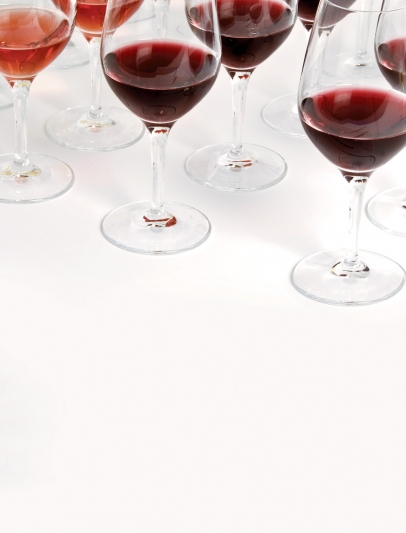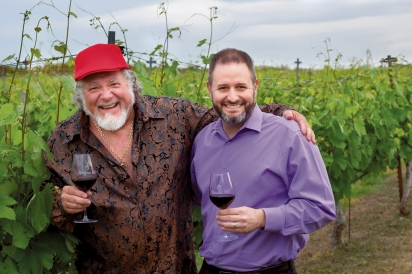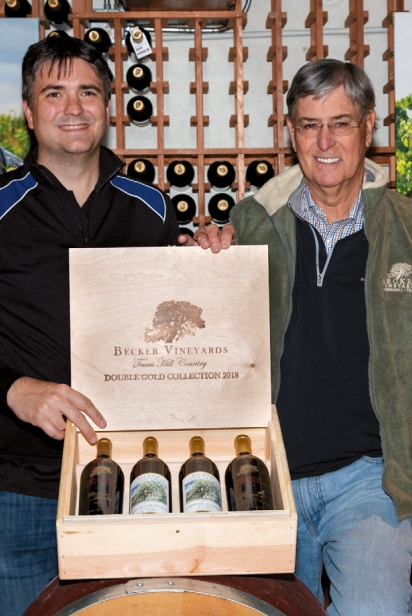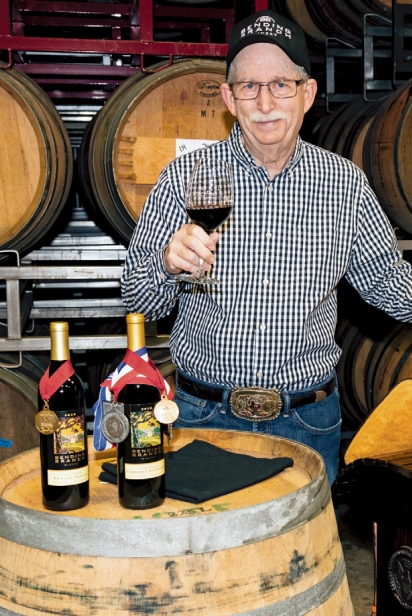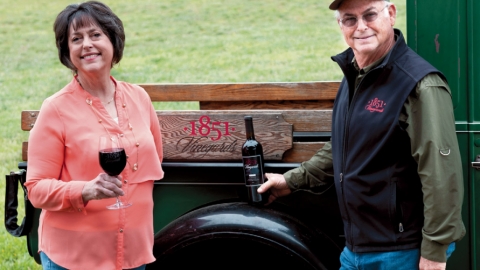Texas Wineries Are Going for the Double Gold
Texas wines increasingly take top honors
Results from major international wine competitions offer an interesting perspective on our local Texas wines. In these competitions, the wines are evaluated blind by internationally savvy judges who aren’t told if the wine in their glass is from an illustrious appellation like Bordeaux, or from an up-and-coming wine region like Texas.
Recently, Texas wines have broken into the highest echelons of international wine competition awards: the coveted “double gold,” where all judges on the panel unanimously agree that the wine is gold-worthy.
In the 2018 and 2019 results from the prestigious and internationally expansive San Francisco Chronicle Wine Competition, Texas wineries brought home a handsome 27 double gold medals. In 2018 alone, four double gold awards from this competition were bestowed upon one Texas winery: Becker Vineyard. All this got me thinking: “What’s up? What’s changed? Has Texas finally learned the magic?” Let’s find out what several recent Texas double-gold-winning winemakers have to say.
I asked Drs. Richard and Joe Becker, father and son owners of Becker Vineyards in Stonewall, if, after over two decades of making Texas wine, they had the magic formula for making internationally recognized double-gold- medal wines. Joe says: “The best I can say is that I remember what California wine legend Robert Mondavi told my father when he came to try our wines: “Cut no corners. Use the best grapes and the best American and French oak barrels available,” and this is what we do.”
Richard acknowledged: “Great wines start in the vineyard. Therefore, we include our growers as part of the winery team. I also credit our winemaker, John Leahy. He came to us with fine California winemaking experience and had a hand in some of California’s most notable cult wines.”
Credit for Bending Branch Winery’s success in double-gold awards stems from the relationship between Bending Branch owner Dr. Robert Young and acknowledged longtime premium Texas High Plains wine grower Neal Newsom. Their collaboration in 2013 resulted in the first modern-day double-gold- awarded wine for Texas in the San Francisco competition, Bending Branch 2010 Newsom Vineyards Cabernet Sauvignon. This year, the same duo earned another double gold, this time for the 2015 Bending Branch Newsom Vineyard Petit Sirah.
Young credits his success and that of other Texas wines to the rising tide of better grape harvests in recent years in terms of both quality and quantity, and for the wide variety of new, and somewhat lesser known, grape varieties doing well in Texas today.
Young’s wines have also benefitted from his using innovative methods to extract color, flavor and aroma from his grapes. His double gold 2010 Cabernet was made with what he calls “cryo-maceration,” where he froze half of the grapes to help macerate the skins thus liberating what he needed to make his bold statement. His more recent double gold 2015 Petit Sirah was made with a component of the grapes processed with a European technique called “flash détente,” which uses controlled heat and vacuum to obliterate the grape skins with great benefits in wine color, flavor and aromatics.
Paul Bonarrigo, having been in the Texas wine business for over 40 years, says, “Frankly, there is no formula for making double-gold-winning wines. The best I can say is that to win an award like this, you need a wine that looks right, smells right, feels right on the palate and makes a big impression with all the judges.”
In 2018, Messina Hof Winery made just such an impression in San Francisco with their double-gold Sauvignon Blanc with its crisp and citrusy aromatic notes leading to a rich and lingering mouthfeel. In 2019, their double-gold winner was a Syrah-driven GSM, an all-Mediterranean blend of Grenache, Syrah and Mourvèdre. Paul says: “Bear Dalton at Spec’s first suggested that we make this Rhone-style blend in keeping with our region’s Mediterranean clime and our increasing plantings of these sun-loving grapes.” Paul’s son, Paul Mitchell, adds, “We have also invested in developing different oak aging profiles for the different wines we make. I feel that in our GSM, this approach really made our blend special and something noteworthy to the judges.”
During the past two years, soon-to-be-20-year-old Haak Vineyards has amassed wine awards from around the world including four double gold medals in San Francisco for wines made in a variety of styles: dry, semi-dry, dessert and Madeira, all made from a single (non-European wine) grape, Blanc Du Bois. Their fifth double gold was for Haak’s Madeira, made from Jaquez (aka Black Spanish).
Haak says: “We are reaching the point where Texas wines keep getting better and better and have become a force to be reckoned with on the international scene. It is especially true for our Blanc Du Bois. I started from scratch 30 years ago and learned little by little how to tend and harvest it and handle it in the winery. Now, it is one of the most produced white wine grapes in Texas and double-gold-medal worthy.”
Of his winemaker Tiffany Farrell, starting her third season, Haak says: “She may be new but she is sharp and deserves credit, too. In her first two years here, she’s come up with touches of her own and made two of our recent double-gold wines.”
Double-gold awards are not just for older, established wineries. Dabs and John Holliman have only been in the wine business since 2013, when they planted their vineyard on family land that Dabs inherited. John tends the vines and gives credit for winemaking to his wife, Dabs.
In 2019, the Hollimans earned a double gold in San Francisco for their 2016 1851 Winery Tannat. Dabs says: “What makes this award especially important to us is that it came from our very first harvest of estate-grown fruit.”
While some think of winemaking as “glamorous magic,” it’s not. She says: “I have to give credit to all of the people around Texas—growers, winemakers and Ag Extension folks—who helped us get started and who taught us good winemaking basics. From my perspective, it is not magic that makes a double-gold wine but rather a lot of hard work and attention to details with a blessing from nature along the way.”


